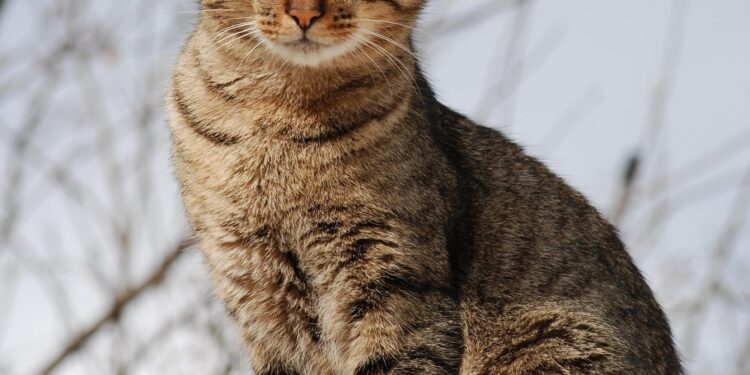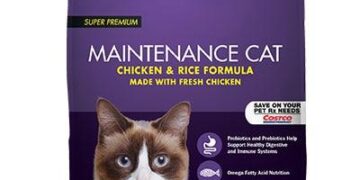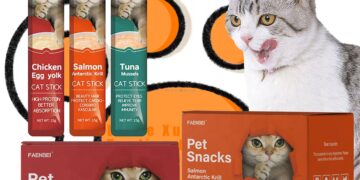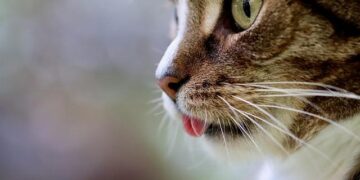Table of Contents
A Diagnosis and a Crossroad: Your Cat Has Diabetes. What Happens Now?
The phone call from the veterinarian delivers a message that stops time.
The words “diabetes mellitus” echo, and a wave of fear, confusion, and often guilt, washes over you.1
You might picture a future of complicated injections and constant worry, a diminished life for your beloved companion.
These feelings are a normal and valid response to a serious diagnosis, but they are not the end of the story.
A diagnosis of feline diabetes is not a final verdict; it is a crossroad.
It marks the beginning of a new path, one where you, the owner, become the most powerful agent of change in your cat’s health journey.
Feline diabetes is a common endocrine disorder, particularly in overweight cats.3
It most closely resembles Type 2 diabetes in humans, a condition characterized by the body’s inability to properly use insulin, leading to high blood sugar (hyperglycemia).4
The clinical signs you may have noticed—excessive thirst and urination, weight loss despite a ravenous appetite, or even a sudden weakness in the hind legs known as peripheral neuropathy—are all consequences of this metabolic imbalance.1
While insulin therapy is a critical component of treatment, the true cornerstone of management, and the key to a long and healthy life, lies in nutrition.7
The most empowering message a cat owner can hear is that feline diabetes can often be reversed.
With diligent dietary management, many cats can achieve a state of diabetic remission, where their blood sugar stabilizes and they no longer require insulin injections.1
This remarkable possibility reframes the diagnosis from a lifelong burden to a manageable condition with a tangible, hopeful goal.
In a surprising turn, this challenging diagnosis often becomes a catalyst for positive change that extends beyond the individual cat.
To manage the diabetic cat’s diet strictly, many owners find it necessary to switch all felines in the household to the new food to prevent accidental consumption of high-carbohydrate meals.2
The results are frequently revelatory.
Owners report that their other, non-diabetic cats begin to show marked health improvements: coats become shinier, chronic vomiting ceases, and overweight cats begin to shed excess pounds.2
This reveals a fundamental truth: the “diabetic diet” is not a restrictive medical regimen.
It is, in fact, a species-appropriate diet that aligns with the biological needs of
all cats.
The diagnosis, therefore, can be a turning point, an opportunity to re-evaluate and optimize the nutrition and well-being of your entire feline family.
Fueling the Hunter: Why a Cat’s Engine Runs on Protein, Not Carbs
To understand why diet is so powerful in managing feline diabetes, one must first understand the unique metabolic engine of the cat.
Cats are not small dogs or furry humans; they are “obligate carnivores”.10
The term “obligate” means “by necessity.” Their entire physiology is finely tuned to derive nutrients almost exclusively from animal tissue.12
A cat’s natural prey, such as a mouse or small bird, is a package of high protein, moderate fat, and minimal carbohydrates—typically only 1-2% of its composition.13
This ancestral diet is the blueprint for their nutritional needs.
The Feline Metabolic Engine
A cat’s metabolism operates under a profoundly different set of rules than that of an omnivore like a human or a dog.
One of the most significant differences is in how they maintain blood glucose levels.
A cat’s liver is in a near-constant state of gluconeogenesis, the process of creating glucose from non-carbohydrate sources, primarily the amino acids from protein.12
This metabolic pathway is always “on,” adapted for the steady stream of protein provided by frequent, small, carnivorous meals.
In contrast, an omnivore’s liver ramps up gluconeogenesis mainly during periods of fasting.16
This evolutionary adaptation is supported by a unique enzymatic toolkit that is poorly equipped to handle a diet rich in carbohydrates:
- Limited Amylase: Digestion of starches in humans begins in the mouth with salivary amylase. Cats have very little to no amylase in their saliva, and the activity of this enzyme in their pancreas and intestines is significantly lower than in dogs.15
- The Glucokinase Gap: The most critical distinction lies in the liver. Omnivores possess a key enzyme called glucokinase, which is specifically designed to process the large influx of glucose that follows a high-carbohydrate meal. Cats lack this enzyme.15 This “glucokinase gap” means their liver has no efficient mechanism to quickly clear large amounts of sugar from the blood, leaving them vulnerable to prolonged periods of hyperglycemia.
Pouring Gasoline on a Fire
Given this metabolic reality, feeding a high-carbohydrate diet to a diabetic cat has been aptly described as “pouring gasoline on a fire”.8
The “fire” is the cat’s already impaired ability to regulate blood sugar, with a pancreas that is struggling to produce enough effective insulin.
The “gasoline” is the flood of glucose from dietary carbohydrates—the starches and sugars found in many commercial cat foods.
When this flood hits a system that lacks the proper machinery (glucokinase) to handle it, the result is a dramatic and sustained spike in blood sugar.
This chronic hyperglycemia further exhausts and damages the insulin-producing beta cells of the pancreas, worsening the diabetes and making it harder to control, even with insulin.
This raises a critical question: if cats are so ill-equipped to process carbohydrates, why are they the dominant ingredient in so many commercial dry cat foods? The answer lies not in feline nutrition, but in manufacturing technology.
The process used to create dry kibble, called extrusion, requires starches to gelatinize under heat and pressure.
This gelatinized starch acts as a “glue” that binds the kibble together, giving it its familiar shape and crunch.5
Carbohydrates also serve as an inexpensive source of calories compared to high-quality animal proteins.14
Therefore, the high carbohydrate content of most dry cat food is a functional requirement of the manufacturing process, not a nutritional requirement of the cat.
This distinction is fundamental; it means that the standard kibble diet inadvertently prioritizes production convenience over the species-appropriate metabolic needs of the animal it is intended to nourish.
The Gold Standard: The Path to Remission Through an Ancestral Diet
The scientific and veterinary consensus on the ideal diet for a diabetic cat is clear and consistent: it must be high in protein and very low in carbohydrates.3
The specific targets recommended by veterinary nutritionists are:
- Protein: Greater than 40-50% of the food’s metabolizable energy (ME) should come from protein.3
- Carbohydrates: Less than 10-12% of the food’s metabolizable energy should come from carbohydrates.3
Why Wet Food Reigns Supreme
Achieving this nutritional profile is far easier with canned (wet) food than with dry kibble.
Wet foods are inherently better suited for a diabetic cat for two primary reasons:
- Low Carbohydrate Content: Because wet food doesn’t need to go through the high-heat extrusion process, it does not require large amounts of starch as a binder. This allows manufacturers to formulate canned foods that are naturally high in protein and very low in carbohydrates, perfectly aligning with a diabetic cat’s needs.5
- Essential Hydration: One of the hallmark signs of diabetes is excessive urination, which can quickly lead to dehydration. Wet food, which typically contains around 78% moisture, provides a crucial source of water, helping to maintain hydration and support the health of the kidneys and urinary tract.22
This dietary shift is not merely about managing symptoms; it holds the profound potential for a cure.
Multiple studies have demonstrated the power of a high-protein, low-carbohydrate (HPLC) diet to induce diabetic remission.
In one landmark study, 68% of diabetic cats fed a carbohydrate-restricted canned diet were able to discontinue insulin therapy entirely.8
This is corroborated by a wealth of anecdotal evidence from cat owners who have witnessed their cats go into remission, sometimes within weeks of making the switch.1
Navigating the Aisles: Prescription vs. Over-the-Counter Options
Veterinarians will often recommend a prescription therapeutic diet, such as Purina Pro Plan DM, Royal Canin Glycobalance, or Hill’s Prescription Diet M.D.4
While these foods can be effective, particularly the canned versions, there is a significant counter-argument within the feline nutrition community.
Critics point out that these diets can be very expensive and that some formulations, especially the dry versions, may still contain carbohydrate levels that are too high or use lower-quality ingredients like corn, wheat, and soy by-products.8
Fortunately, many excellent and affordable over-the-counter (OTC) options meet the HPLC criteria.
Numerous veterinarians and experienced owners recommend the classic pâté-style varieties from widely available brands like Fancy Feast, Friskies, and 9Lives.1
It is crucial to stick to the pâté formulas and avoid any varieties with “gravy” or “sauce,” as these additions are typically thickened with starches, significantly increasing the carbohydrate content.8
This knowledge empowers owners with practical, budget-friendly choices that are just as, if not more, effective than their expensive prescription counterparts.
The Kibble Conundrum: Acknowledging the “Dry Food Addict”
While the scientific case for a wet food diet is overwhelming, real-world application presents a significant hurdle: many cats are “kibble addicts.” They are accustomed to the texture and intense flavor profile of dry food and may staunchly refuse to eat anything else.8
This creates a deeply stressful and dangerous situation for the owner of a diabetic cat.
A cat
must eat before receiving an insulin injection; administering insulin to a cat that has not consumed food can lead to a catastrophic drop in blood sugar (hypoglycemia).2
The owner is caught in a bind, knowing the kibble is detrimental but fearing the consequences of their cat refusing a healthier meal.34
As established, the high carbohydrate content of most dry foods is a direct result of the extrusion manufacturing process, which requires starch as a binding agent.14
A quick calculation using the “Guaranteed Analysis” on a typical bag of dry food reveals the problem.
By subtracting the minimum percentages of protein and fat and the maximum percentages of fiber, moisture, and ash from 100, one can estimate the carbohydrate content.
For many popular dry foods, this figure can be 30%, 40%, or even higher.35
This is a far cry from the sub-10% target needed for diabetic management.
Therefore, the search for a suitable dry food for a diabetic cat is not about finding an ideal option—the ideal option remains a low-carbohydrate wet food.
Instead, it is a pragmatic search for the “least compromised” choice available.
The goal is to identify a kibble that, through innovative formulation, manages to defy the manufacturing constraints and come as close as possible to the high-protein, low-carbohydrate profile that is essential for a diabetic cat’s health.
The Exception to the Rule: An In-Depth Analysis of Ultra-Low-Carbohydrate Dry Foods
While the vast majority of dry cat foods are unsuitable for diabetic cats, a small number of niche brands have engineered products specifically to solve the kibble conundrum.
These foods utilize advanced formulation techniques to minimize carbohydrates while maximizing animal-based protein.
Three brands are consistently cited in veterinary and owner communities as viable options for kibble-addicted diabetic cats: Dr. Elsey’s cleanprotein, Wysong Epigen 90, and Young Again Zero.27
An analysis of these products requires looking beyond marketing claims and focusing on three key areas: their nutritional profile calculated on a Dry Matter Basis (DMB), the quality of their primary ingredients, and the extensive body of real-world feedback from owners who have used them.
Deep Dive: Dr. Elsey’s cleanprotein
- Nutritional Profile: This food is formulated with extremely high levels of animal-based protein (over 90%), with primary ingredients like chicken, salmon, and pork plasma.38 Its carbohydrate content is very low and meets the therapeutic threshold. The chicken formula, for example, has been calculated by users to contain approximately 4.6% carbohydrates on a DMB 34, while the salmon formula contains about 8.8% DMB.41
- Owner Feedback: Dr. Elsey’s cleanprotein is generally well-regarded. Many owners report success in managing their cat’s diabetes, with some attributing it to helping their cat achieve remission.40 Crucially, it is often cited as a better-tolerated alternative for cats that experience severe gastrointestinal (GI) distress on other ultra-high-protein formulas.34
Deep Dive: Wysong Epigen 90
- Nutritional Profile: Wysong markets this product as “Starch Free™,” boasting an unprecedented 63% protein from sources like chicken meal and meat protein isolate.42 It uses a patented process that includes vegetable protein isolates to achieve its starch-free status.44 The carbohydrate content is exceptionally low, with owner calculations and company estimates placing it around 5.3% DMB.45
- Owner Feedback: Reviews for Epigen 90 are more mixed. It is praised by many owners for its effectiveness in diabetic management and palatability.43 However, its highly concentrated nature requires an extremely slow transition period, and some owners report it can cause GI upset, particularly diarrhea.43 While past concerns about its taurine content have been addressed by the company, its unique formulation may not be suitable for all cats.45
Deep Dive: Young Again Zero / Zero Mature
- Nutritional Profile: Marketed as a “Zero Carb” food, this product contains less than 6% digestible starch and very high protein levels (over 54%) from sources like hydrolyzed pork and chicken meal.47 Its extremely low carbohydrate level has made it a stalwart in feline diabetes communities.
- Owner Feedback: This is the most polarizing of the three formulas. It is lauded with passionate, almost miraculous testimonials of cats achieving rapid diabetic remission and regaining youthful vitality.25 However, these successes are matched by equally frequent and intense complaints of severe and persistent side effects. Owners describe “crazy diarrhea,” “projectile stools,” and foul-smelling feces that can make cohabitation difficult.34
The common thread of GI issues, particularly with Young Again, is likely not a random quality control failure.
It appears to be a direct physiological consequence of the food’s extreme formulation.
These diets present a multi-faceted shock to a cat’s digestive system: a massive increase in protein load, a relative lack of the insoluble fiber that helps form solid stool, and the use of novel binders like guar gum (in Young Again’s case), which is known to have a laxative effect.23
A digestive system accustomed to processing a 35% carbohydrate, moderate-fiber kibble can be overwhelmed by this radical shift, resulting in the reported side effects.
This underscores that while these foods are nutritionally superior for managing blood glucose, their tolerability can be highly individual.
Comparative Analysis of Ultra-Low-Carb Dry Foods
| Feature | Dr. Elsey’s cleanprotein (Chicken) | Wysong Epigen 90 | Young Again Zero Mature |
| Protein (DMB) | ~63% 41 | ~66% 45 | ~58% 47 |
| Carbohydrates (DMB) | ~4.6% 34 | ~5.3% 45 | <6% 47 |
| Primary Protein Sources | Chicken, Pork Plasma, Gelatin 40 | Chicken Meal, Organic Chicken, Meat Protein Isolate 51 | Hydrolyzed Pork, Chicken Meal, Pork Protein Concentrate 47 |
| Notable Binders/Fibers | Gelatin, Fructooligosaccharides 40 | Apple Fiber, Chia Seeds 51 | Guar Gum, Soluble Fiber 47 |
| Approx. Price/lb | ~$8.50 36 | ~$6.20 36 | ~$6.00 (25lb bag) 52 |
| Owner Feedback: Pros | Effective for diabetes, better GI tolerance than competitors 34 | “Starch-free,” effective for diabetes, palatable 43 | “Miraculous” rates of diabetic remission, highly palatable 25 |
| Owner Feedback: Cons | Expensive, some cats dislike it. | Requires very slow transition, some reports of diarrhea 43 | Widespread reports of severe, persistent diarrhea and foul-smelling feces 34 |
Beyond the Bowl: Creating a Diabetes Management Ecosystem
Successful diabetes management involves more than just selecting the right food.
It requires creating a holistic ecosystem of care, routine, and monitoring, with you and your veterinarian as partners.
First and foremost, any dietary change for a diabetic cat, especially one already on insulin, must be conducted under the close supervision of a veterinarian.33
Switching to a low-carbohydrate diet will almost certainly and dramatically reduce the cat’s need for insulin.
Continuing the previous dose can lead to a dangerous, life-threatening hypoglycemic event.1
Your veterinarian will guide you on how to adjust the insulin dose in response to the new diet.
To facilitate this, learning to monitor your cat’s blood glucose at home is one of the most valuable skills you can acquire.1
Home testing provides immediate, real-time data on how the food and insulin are affecting your cat’s blood sugar, allowing for precise, data-driven adjustments in collaboration with your vet.
This transforms you from a passive administrator of medicine into an active, informed member of your cat’s healthcare team and is the best way to prevent emergencies.
Consistency is the bedrock of diabetic management.
A strict routine of meals and insulin injections, typically administered 12 hours apart, is essential for stable blood glucose levels.1
This means the era of “free feeding,” or leaving a bowl of dry food out all day, must end.
Treats should be limited and must also be low in carbohydrates; excellent options include pure, freeze-dried meat treats.3
Finally, weight management is critical.
Obesity is a primary driver of insulin resistance in cats.3
For an overweight cat, a controlled weight loss of 0.5-2% of their body weight per week is a key therapeutic goal.6
This can be achieved through portion control of the new, appropriate diet and by incorporating daily exercise.
Even 15-20 minutes of interactive play with a wand toy can help burn calories, build lean muscle mass, and improve the body’s sensitivity to insulin.1
Your Action Plan: A Veterinarian’s Guide to Making the Right Choice
Navigating this new reality can feel overwhelming, but it can be simplified into a clear, tiered action plan.
Tier 1: The Gold Standard
The first and most highly recommended step is to attempt a transition to a high-protein, low-carbohydrate wet food.
This is the diet that most closely mimics a cat’s natural prey and offers the best chance for diabetic remission.
For a “kibble addict,” this transition requires patience.
Start by mixing a very small amount (e.g., half a teaspoon) of the new wet food with their existing dry food.
If accepted, slowly and gradually increase the proportion of wet food to dry food over a period of several weeks.
Another successful technique is to use a low-carbohydrate dry food as a “topper,” crumbling a few pieces over the wet food to provide a familiar texture and scent.8
Tier 2: The Necessary Compromise
If, after a patient and persistent effort, the transition to wet food fails, the next step is to select an ultra-low-carbohydrate dry food.
Based on the balance of efficacy and owner-reported tolerance, a logical starting point would be Dr. Elsey’s cleanprotein, as it appears to have a lower incidence of severe GI side effects compared to its competitors.34
The transition to this new, highly concentrated food must be exceptionally slow—even slower than the transition to wet food.
Mix just a few kibbles of the new food in with the old, and increase the amount incrementally over several weeks, not days.
During this time, monitor your cat’s litter box habits and stool consistency very closely.
Tier 3: The Universal Principles
Regardless of whether you choose wet or dry food, the core principles of diabetic nutritional management remain the same:
- Read the Label: Become familiar with the guaranteed analysis on pet food bags and learn how to estimate the carbohydrate content. An online Dry Matter Basis (DMB) calculator can be a valuable tool.54
- Aim for the Targets: Always strive for a diet where protein accounts for more than 40% of metabolizable energy and carbohydrates account for less than 10%.
- Partner with Your Vet: Never undertake a significant dietary change for a diabetic cat without veterinary supervision and a plan for adjusting insulin.
- Monitor, Monitor, Monitor: Home blood glucose testing is the single most effective tool for achieving tight glycemic control and ensuring your cat’s safety.
The journey with a diabetic cat is one of diligence, education, and profound love.
Armed with a deeper understanding of your cat’s unique metabolism and the powerful role of species-appropriate nutrition, you are now equipped to make the best possible choices.
The path ahead requires commitment, but it is a path that can lead to a longer, healthier, more vibrant life for your companion, and potentially, the incredible gift of remission.
Works cited
- Devastated to learn that my cat, has developed diabetes today. What can I do to ensure that he will be healthy and happy and live as long as he can? : r/CatAdvice – Reddit, accessed August 15, 2025, https://www.reddit.com/r/CatAdvice/comments/wbncxe/devastated_to_learn_that_my_cat_has_developed/
- Cures4Cats: Feline Diabetes – Stories from the Cat Parents – EveryCat Health Foundation, accessed August 15, 2025, https://everycat.org/cures4cats-feline-diabetes-stories-from-the-cat-parents/
- Treats & Diet for Diabetic Cats Simply Explained! | Dr. Lindsay Butzer Veterinarian, accessed August 15, 2025, https://www.youtube.com/watch?v=vYPvhwSbbn4
- Diabetic Cat, accessed August 15, 2025, https://forum.diabetes.org.uk/boards/threads/diabetic-cat.62351/
- Diabetic Cat Diet – Veterinary Partner – VIN, accessed August 15, 2025, https://veterinarypartner.vin.com/doc/?id=4952919
- Treatment – catvets.com, accessed August 15, 2025, https://catvets.com/resource/diabetes-toolkit-treatment/
- Nutrition for Cats With Diabetes | Merck Animal Health USA, accessed August 15, 2025, https://www.merck-animal-health-usa.com/vetsulin/cats/nutrition-for-cats-with-diabetes
- Feline Diabetes- treatment and prevention in cats, accessed August 15, 2025, https://catinfo.org/feline-diabetes/
- Diabetic wet cat food : r/Pets – Reddit, accessed August 15, 2025, https://www.reddit.com/r/Pets/comments/7zibn0/diabetic_wet_cat_food/
- Best Diabetic Cat Foods and Tips on Feeding – The Spruce Pets, accessed August 15, 2025, https://www.thesprucepets.com/best-diabetic-cat-foods-5077153
- Feeding Your Cat | Cornell University College of Veterinary Medicine, accessed August 15, 2025, https://www.vet.cornell.edu/departments-centers-and-institutes/cornell-feline-health-center/health-information/feline-health-topics/feeding-your-cat
- Feline Nutrition – Answers: What Exactly is an ‘Obligate Carnivore …, accessed August 15, 2025, https://hare-today.com/feline-nutrition/answers/answers-what-exactly-is-an-obligate-carnivore
- Cats and Carbohydrates – What is the Impact? – WSAVA2011 – VIN, accessed August 15, 2025, https://www.vin.com/apputil/content/defaultadv1.aspx?id=5189562&pid=11343
- Cats and Carbohydrates: Myths and Truths – The Little Carnivore, accessed August 15, 2025, https://thelittlecarnivore.com/en/blog/cats-and-carbohydrates-myths-and-truths-raw-diets
- Carbohydrate metabolism of the cat 2. Digestion of starch1 | Request PDF – ResearchGate, accessed August 15, 2025, https://www.researchgate.net/publication/230255539_Carbohydrate_metabolism_of_the_cat_2_Digestion_of_starch1
- Normal Glucose Metabolism in Carnivores Overlaps with Diabetes Pathology in Non-Carnivores – Frontiers, accessed August 15, 2025, https://www.frontiersin.org/journals/endocrinology/articles/10.3389/fendo.2013.00188/full
- Scientists study how cats digest carbohydrates – PetfoodIndustry, accessed August 15, 2025, https://www.petfoodindustry.com/news-newsletters/pet-food-news/article/15464432/scientists-study-how-cats-digest-carbohydrates
- Cats and Carbohydrates: The Carnivore Fantasy? – MDPI, accessed August 15, 2025, https://www.mdpi.com/2306-7381/4/4/55
- Differences between cats and dogs: a nutritional view, accessed August 15, 2025, https://slunik.slu.se/kursfiler/HV0055/40021.1112/Differences_between_cats_and_dogs_a_nutritional_view.pdf
- Cats and Carbohydrates: The Carnivore Fantasy? – PMC, accessed August 15, 2025, https://pmc.ncbi.nlm.nih.gov/articles/PMC5753635/
- Diabetes Mellitus in Cats – Purina Institute, accessed August 15, 2025, https://www.purinainstitute.com/centresquare/therapeutic-nutrition/feline-diabetes-mellitus
- Diet For Diabetic Cats | Feline Specialist Vet | CSS, accessed August 15, 2025, https://www.catspecialists.com.au/diet-and-nutrition-for-diabetic-cats/
- Nutrition for Cats with Diabetes Mellitus | VCA Animal Hospitals, accessed August 15, 2025, https://vcahospitals.com/know-your-pet/nutrition-for-cats-with-diabetes-mellitus
- Effects of diet on glucose control in cats with diabetes mellitus treated with twice daily insulin glargine, accessed August 15, 2025, https://pmc.ncbi.nlm.nih.gov/articles/PMC10832782/
- Zero Cat Food, Reviews – Young Again Pet Food, accessed August 15, 2025, https://www.youngagainpetfood.com/products/zero-cat-food/reviews
- My brother’s cat just got diagnosed with diabetes. Has anyone had experience with this? : r/Pets – Reddit, accessed August 15, 2025, https://www.reddit.com/r/Pets/comments/2dnytb/my_brothers_cat_just_got_diagnosed_with_diabetes/
- Recently lost my job and just found out my cat has diabetes. – Reddit, accessed August 15, 2025, https://www.reddit.com/r/CatAdvice/comments/17uqs9t/recently_lost_my_job_and_just_found_out_my_cat/
- Experiences with diabetic cats : r/Pets – Reddit, accessed August 15, 2025, https://www.reddit.com/r/Pets/comments/18r4z7y/experiences_with_diabetic_cats/
- Choosing the right Low Carb Food – Diabetic Cat International, accessed August 15, 2025, https://www.diabeticcatinternational.com/knowledge/choosing-low-carb-food/
- High Protein / Low Carbohydrate Cat Foods, accessed August 15, 2025, https://westonka.vet/wp-content/uploads/2020/10/Cat_Foods_High_Protein_Low_Carbs.pdf
- Change in food messed up my diabetic cat : r/CatAdvice – Reddit, accessed August 15, 2025, https://www.reddit.com/r/CatAdvice/comments/1d7zdfi/change_in_food_messed_up_my_diabetic_cat/
- Getting her to eat her prescription food : r/CatAdvice – Reddit, accessed August 15, 2025, https://www.reddit.com/r/CatAdvice/comments/1e53lul/getting_her_to_eat_her_prescription_food/
- Feline Diabetes | Cornell University College of Veterinary Medicine, accessed August 15, 2025, https://www.vet.cornell.edu/departments-centers-and-institutes/cornell-feline-health-center/health-information/feline-health-topics/feline-diabetes
- Young again experiences? | Feline Diabetes Message Board – FDMB, accessed August 15, 2025, https://felinediabetes.com/FDMB/threads/young-again-experiences.216841/
- How to Calculate the Carbs in Your Cat’s Food – PetMD, accessed August 15, 2025, https://www.petmd.com/blogs/nutritionnuggets/cat/jcoates/2013/sept/calculating-carbohydrates-in-your-cats-food-30887
- DIABETIC SUPPORT DRY CAT FOOD (Free Shipping) | Chewy, accessed August 15, 2025, https://www.chewy.com/f/diabetic-support-dry-cat-food_c388_f50v308396
- Can anyone recommend some good food options (wet or dry) for my 15-year old, newly diagnosed, diabetic cat? : r/catfood – Reddit, accessed August 15, 2025, https://www.reddit.com/r/catfood/comments/1fxw471/can_anyone_recommend_some_good_food_options_wet/
- Dr. Elsey’s cleanprotein™ Cat Food – feed protein, not plants, accessed August 15, 2025, https://www.drelseys.com/product-types/food/
- Dr. Elsey’s cleanprotein™ Pork Recipe Dry Kibble Cat Food, accessed August 15, 2025, https://www.drelseys.com/products/pork-recipe-kibble/
- DR. ELSEY’S cleanprotein Chicken Kibble Cat Dry Food, 2.0-lb bag – Chewy.com, accessed August 15, 2025, https://www.chewy.com/dr-elseys-cleanprotein-chicken-kibble/dp/146266
- What’s in previous versions of cleanprotein™? | Dr. Elsey’s, accessed August 15, 2025, https://www.drelseys.com/faqs/whats-in-previous-versions-of-cleanprotein/
- Healthy Dry Cat Foods – Wysong, accessed August 15, 2025, https://www.wysong.net/collections/dry-cat-food
- WYSONG Epigen 90 Starch-Free Formula Grain-Free Dry Dog & Cat Food, 5-lb bag, accessed August 15, 2025, https://www.chewy.com/wysong-epigen-90-starch-free-formula/dp/103307
- Epigen™ ingredient concerns, accessed August 15, 2025, https://www.wysongepigen.net/generalinfo.php?content=ingredientconcerns
- Selecting New Cat Food | Feline Diabetes Message Board – FDMB, accessed August 15, 2025, https://felinediabetes.com/FDMB/threads/selecting-new-cat-food.293190/
- I asked Wysong about Epigen 90 | Feline Diabetes Message Board – FDMB, accessed August 15, 2025, https://felinediabetes.com/FDMB/threads/i-asked-wysong-about-epigen-90.70573/
- Young Again Mature Health Cat Food – Can & Clover, accessed August 15, 2025, https://www.canclover.com/products/mature-health-cat-food
- Zero Mature Health, Reviews – Young Again Pet Food, accessed August 15, 2025, https://www.youngagainpetfood.com/products/zero-mature-health/reviews
- Unbiased Young Again Cat Food Review – Cats.com, accessed August 15, 2025, https://cats.com/young-again-cat-food-review
- What are Low-Carb Diet options for my diabetic cat? – Delmar Animal Hospital, accessed August 15, 2025, https://delmaranimalhospital.com/vets/faq-details/crating_the_adult_dog/
- Epigen 90™ High Protein & Starch Free Dry Dog & Cat Food – Wysong, accessed August 15, 2025, https://www.wysong.net/products/epigen-90
- Zero Cat Food, Sizes – Young Again Pet Food, accessed August 15, 2025, https://www.youngagainpetfood.com/products/zero-cat-food/sizes
- Diabetes Educational Toolkit – catvets.com, accessed August 15, 2025, https://catvets.com/wp-content/uploads/2024/01/AAFP-DiabetesToolkit-Full.pdf
- Dry Matter Basis Calculator – Feline Nutrition Center, accessed August 15, 2025, http://felinenutritioncalculators.com/dmb.html






